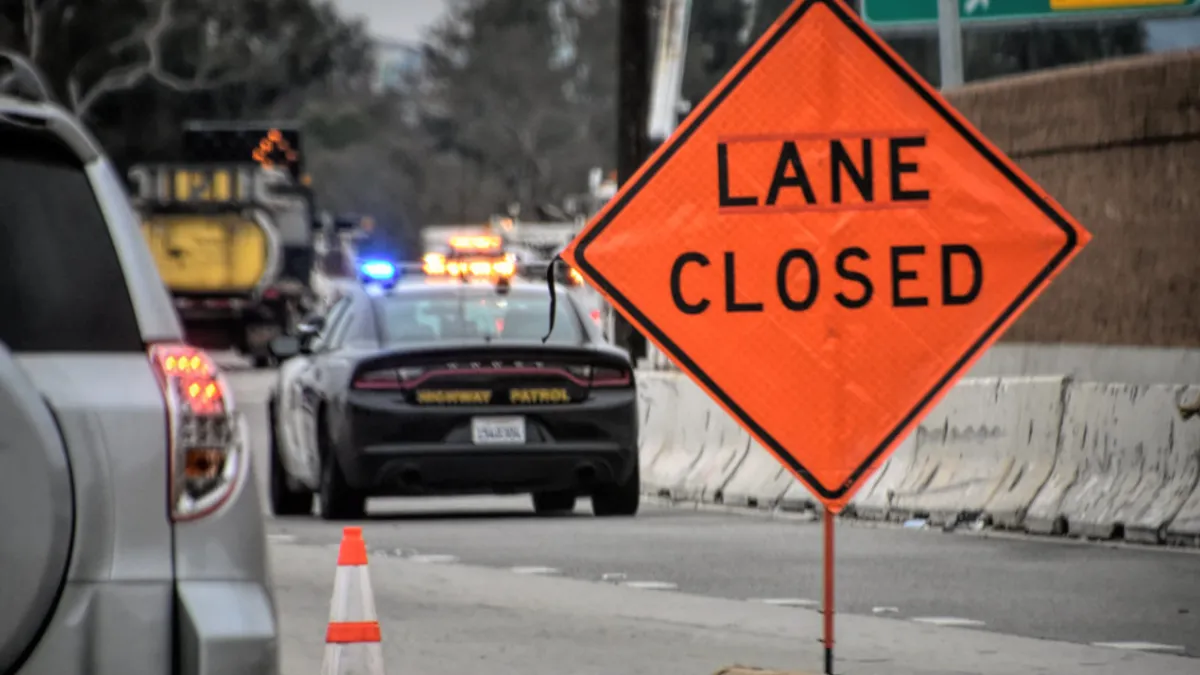Highway construction workers often do their jobs within inches of speeding vehicles and potential sideswipes. It’s dangerous, and the numbers aren’t trending in the right direction.
“You don’t realize what a rearview mirror at 45, 55, 65 miles an hour can do,” said Skip Powe, principal at Nashville, Tennessee-based engineering firm Smith Seckman Reid. “A mirror upside the head at 55, hard hat or not, you’re in trouble."
Powe’s comments came during a briefing hosted by the Associated General Contractors of America, highlighting its annual report surveying highway construction builders.
More highway construction work will start in the coming months — as the bipartisan Infrastructure Investment and Jobs Act will bring $110 billion in new funding for roads and bridges — and motorist collisions have not shown any signs of slowing down, literally, as distracted driving and speeding become an increasing concern, especially for workers on the front lines.
Infrastructure funding
The IIJA will benefit construction and the nation’s aging infrastructure.
“We’re going to see a lot more of that highway work thanks to that bipartisan infrastructure bill,” said AGC Chief Economist Ken Simonson during the briefing. More highway work, however, means more drivers traveling at high speeds through an increased number of work zones.
The AGC report finds highway workers more likely to be struck by a vehicle while working than any other time in the last 17 years. According to the survey, 64% of respondents reported at least one crash on their jobsites in the last year. One third reported five or more crashes in the last 12 months.
Workers sustained injuries in 18% of those incidents, and died in 7%. Nevertheless, workzone collisions prove more fatal to drivers and passengers: 41% reported those in the car sustaining injuries with 15% dying as a result of the collision.
Though the IIJA sets aside funds for worker safety improvements, Simonson said the AGC views this issue as a state-by-state problem, and encourages their chapters and members to encourage local legislatures to provide deterrents to make highway work zones safer.
Potential solutions
AGC and its affiliates say they train workers to take more stock of their surroundings, while researching technology like wearables alerting workers to nearby vehicles. But even that won’t solve the problem.
“Elected officials need to do more to protect workers and motorists in highway work zones,” Simonson said.
Marty McKee, vice president of King Asphalt in Liberty, South Carolina, said he’s seen an abundance of recent roadway work, but the government has required his teams work at night on both primary and secondary routes, something he described as “a different animal.” Late at night, drivers speed more and take more chances on what they perceive as more open roads, Powe said.
Some work zones use barriers to protect workers, but even when those work, it can inflate the project cost. Some projects don’t even have those barriers.
“Most of the time we’re just using cones out there, so we’re sitting ducks,” McKee said.
Drivers have also driven faster as more return to the major roadways, experts said during the briefing. During the earlier days of COVID-19, fewer drivers filled the roads, leading to average speeds increasing. Now, more drivers commute every day, and they don’t want to slow down. Just above half of drivers who increased driving during the pandemic reported driving 10 mph or more above the speed limit on residential streets, AAA reported.
Contractors need to push for a police presence and more automated enforcement, said Steve McGough, president and CEO of construction software provider HCSS. Often, McGough said, a single police vehicle won’t deter drivers enough; one officer should watch the site and another should pull over violators speeding past work zones.
Automated enforcement, McGough said, has proven effective, often with increasing fines for those who repeatedly speed through highway jobsites. Nevertheless, all drivers need to practice safer, basic practices.
“Best thing we can do is slow down,” McGough said. “The best thing we can do is put our phone down.”























